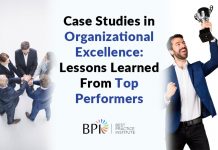HR Trend Wipeout: Are you setting up your Organization and Employees for Collaboration and High Performance or Taking Away Their Tools for Success?
Trends in Human Resources come and go with such rapidity it is hard to ride the wave without getting wiped out. As organizations expand and leaders adopt a stronger focal lens across functions, generations and geographies, organizational cultures rely more heavily on the need for openness and collaboration. The field of HR is well aware that competition and fear trump collaboration any day. And, we have seen how the world of HR is drastically combating fear and competition by throwing away measurement based performance reviews entirely. Based on our research in organization development and leadership development, we find this to be a highly dysfunctional and inappropriate reaction. Creating a polar opposite response to a problem will systemically wipe out all metrics that not only help to predict future behavior, but will also help employees to assist and coach each other to get better. The field of HR needs to maintain its access to this data resource – productive collaboration needs metrics to measure productivity and group efficiency. Rewarding the correct collaborative behavior is what leads to a culture of openness and transparency. Let’s give the tools of rating and performance reviews back to the leaders, and they can create their own culture of feedback. And, let’s set up rules for them where they are incentivized for coaching each other to get better. This way, we take the requirement for HR to become the performance appraiser and place it into the hands, hearts, and minds of each individual employee.
Last week, a group of cross-industry BPI senior executives met at Novelis, Inc. in Atlanta to discuss current challenges, trends and future opportunities in the space of Talent Management. With topics ranging from global standardization to challenging traditional performance management, there were two underlying themes: transformational change and redefining the field of performance management. Organizational leaders are shifting from the traditional, status quo to creating more innovative, future-focused systems and programs. There is a need for hybrid thinking, in which leaders transform organizational cultures by recognizing future needs, with clear alignment to the business strategy. No polarity of thought or action will allow for flexibility and success. This is why sponsorship in such change initiatives is crucial. BPI Expert, Daryl Conner, further explains the importance of transformational leaders recognizing the “burning platform,” as he coined, as an opportunity to make great shifts when need and opportunity appear. Jonah Berger, James G. Campbell Associate Professor of Marketing at the Wharton School at the University of Pennsylvania and BPI Expert, explains that having an idea or vision spread contagiously also involves priming and word of mouth.
The need for an environment and culture of continuous, honest and timely feedback is apparent. Kevin Kruse, NY Times bestselling author and BPI Expert on Employee Engagement, explains that we need “GReAT” Leaders who create cultures focusing on Growth, Recognition And Trust. Leaders and managers who use feed-forward coaching, founded by BPI Expert Marshall Goldsmith, and focus on 3-5 year career goals provide the needed growth and development for employees. Adobe Systems Inc. has recognized the need for transformational change anteceded by employee feedback and survey results, completely abolishing the traditional performance review to allow for more frequent, timely discussions led by managers. Adobe has replaced this once per year process with manager owned check-ins focusing on more frequent conversations on development and goals, incentivizing collaboration as it shifted away from a stacked ranking system. Employees are no longer compared to each other. Employees are now evaluated based on self-goals. Monsanto also places a great emphasis on a culture of innovation and agile leadership, giving a great deal of attention to competency and skill development, utilizing a collaboration tool for its employees. Conversations around development and mentoring drive this culture. Similar conversations and mentoring are emphasized at Rockwell Collins, where a culture of openness and collaboration are led by its diversity and inclusion learning continuum, spelling out inclusive behaviors and building a learning roadmap for employees. Leaders are held accountable as diversity measures are integrated into performance and scorecards, with the executive team owning and hosting major initiatives including “speed networking” opportunities.
Driving a culture of recognition & appreciation leads to trust and confidence, according to Kruse. This includes the need to show appreciation often, when deserved, offering specific behavioral examples and explaining how the behavior aligns with the organization’s strategic priorities. These behaviors lead to employee engagement, and therefore emotional commitment to goals. As noted, “Engaged employees care more, perform better, and stay longer.”
According to MTV’s “No Collar worker’s” study, 8 out of 10 millennials want regular feedback from their boss and 9 out of 10 millennials think it’s important to constantly learn at their job. Static performance reviews offer an annual snapshot of performance, with little management conversation between ratings. Dr. John Sullivan, Professor of Management at San Francisco State University and BPI Talent Management Expert, adds that we need to be rewarding excellent people management during involvement and ownership over these systems. Such people companies outperform the market average and, as noted by BCG, frequent “best place to work” placement influences stock market returns by 10 times. Companies such as Google analyze and apply data from surveys, focus groups, academic research, interviews or observe behavior ensuring the proper recognition programs are in place for its innovative and performance based culture. Rewards and recognition at Google come from employees’ peers, managers and executives, targeting both individual and group performance. David Rock, director of the NeuroLeadership Institute, notes that thestrongest intrinsic rewards are in fact social. Social and intrinsic rewards may include personal feedback or targeted understanding of employees preferences, which reduces the reliance on money or other external rewards.
The global organizations mentioned above are creating unified strategies and stories of brand and employee differentiation, as well as arming their employees with the proper tools to have career and performance conversations by being “GReAT” Leaders. Change sponsors, both leaders and employees, who will have a role in these transformational changes will need to shift their mindsets and behaviors, according to Daryl Conner. David Rock also states that traditional performance management often gets it wrong, explaining that feedback is very personal, reviews are branded incorrectly, rewards are often too extrinsic, 360s are often not tied to growth development, organizations focus more on the process than the conversations, and the emphasis is incorrectly placed on an annual event rather than everyday development. As change agents within organizations, leaders need to shift mindsets to support continuous, frequent feedback measuring observable behavior linked to business goals and career objectives. Neuropsychology encourages organizations to create systems and cultures that move from fixed mindsets to growth mindsets, where research reinforces growth mindsets perform more accurately after making mistakes!
Research also shows that the two main reasons an employee leaves his/her job is because he/she is not given the proper tools or resources and lack of effective communication with his/her manager. When we take away performance tools from our employees, we are robbing them of the necessary requirements to do their job better. What they need is a construct: around appreciation and advice to help each other get better. Mixing feed-forward with appreciative inquiry and rating mechanisms will help each employee to get the proper feedback and thus help each other get better over time. This will pull HR away from employees and place the power back in their hands to create a community of help. Specifically, the total of employee turnover cost is equal to costs of hiring new employees plus the costs of training new employees, as explained by John Reh, author of Business: The Ultimate Resource. John also notes, “if a company of five loses two employees, that’s a forty percent turnover rate (2/5) and that’s a pretty high turnover rate.” What we do with the data we receive from ratings or conversations is critical. This information is highly transferable among learners and has a great impact on the organization. Losing access to this information will be catastrophic for managers and leaders.
To begin leading a transparent culture, you must first enable a functional culture of coaching. The overall vision is to develop a culture of change champions where every employee is incentivized and dedicated to each other’s development. Without the tools for feedback and change, employees will not be able to do their job properly, and will eventually leave. When employees leave, organizations are left without data, knowledge and feedback. How are you leading a transparent culture of continuous feedback?










